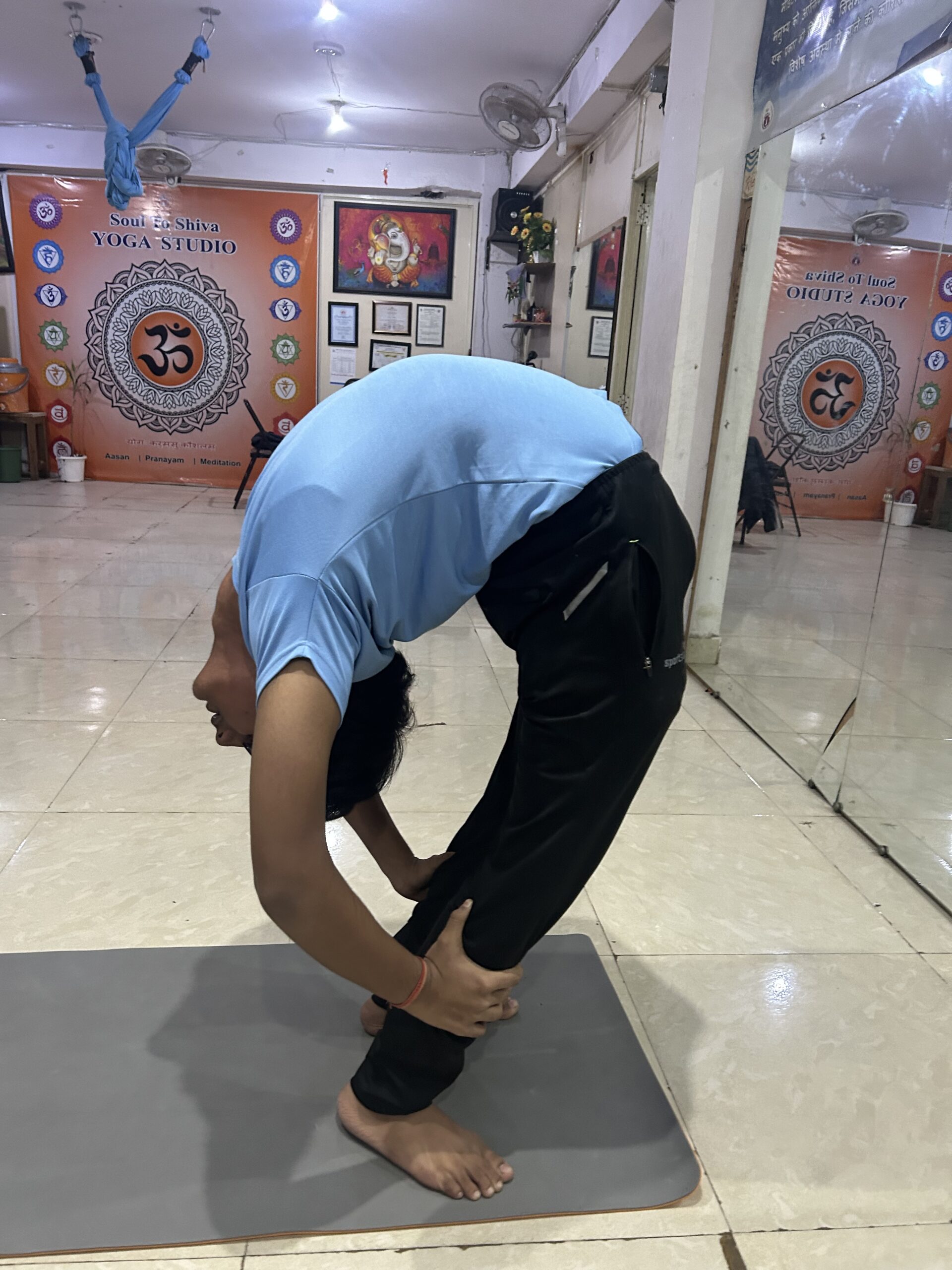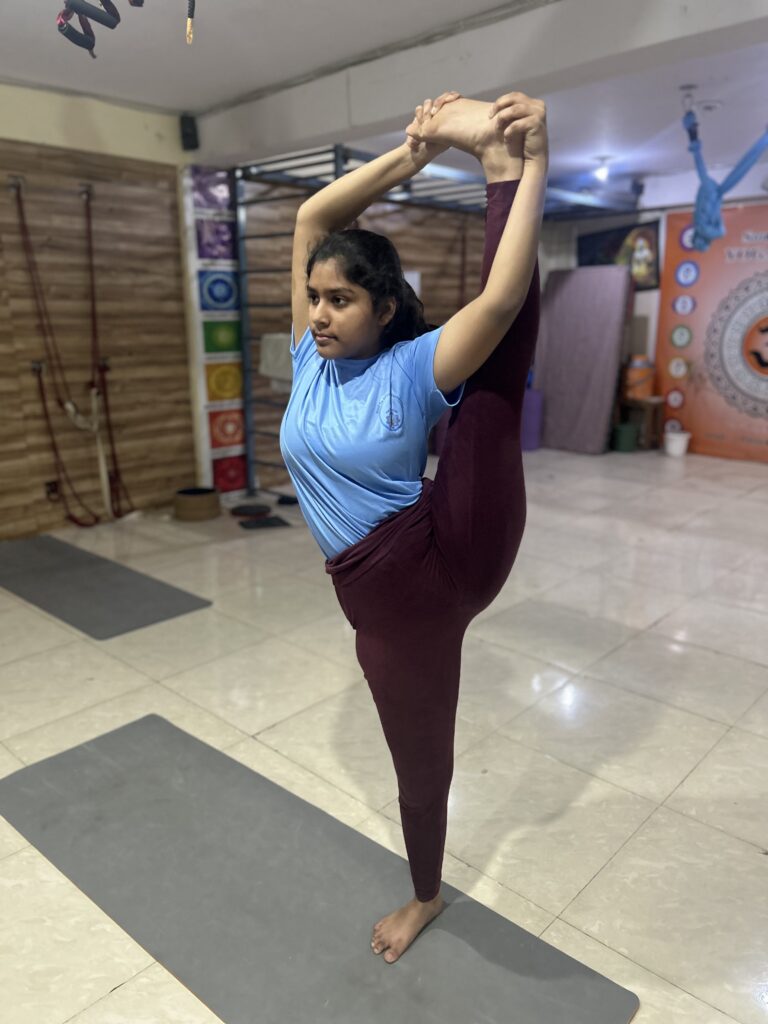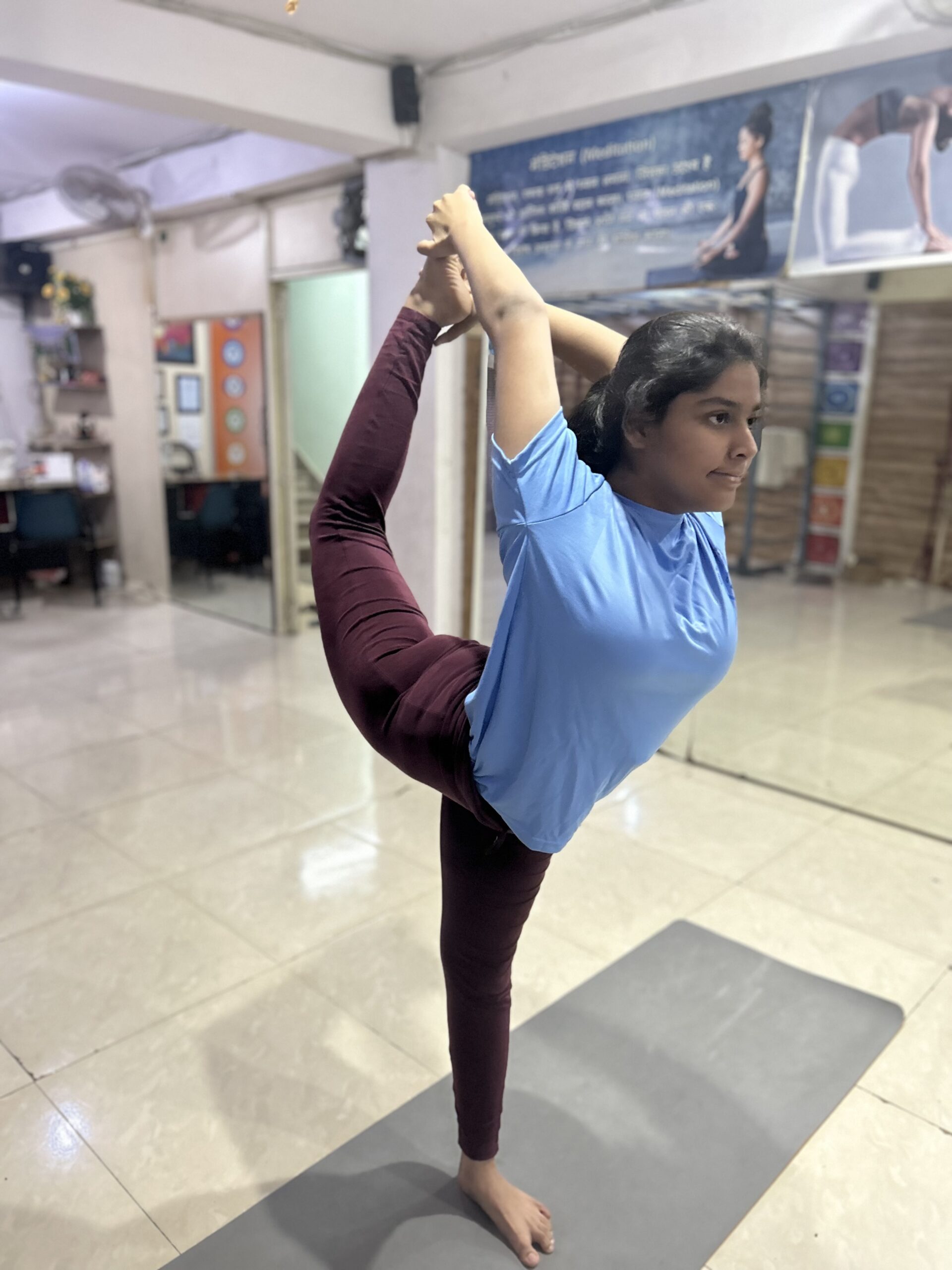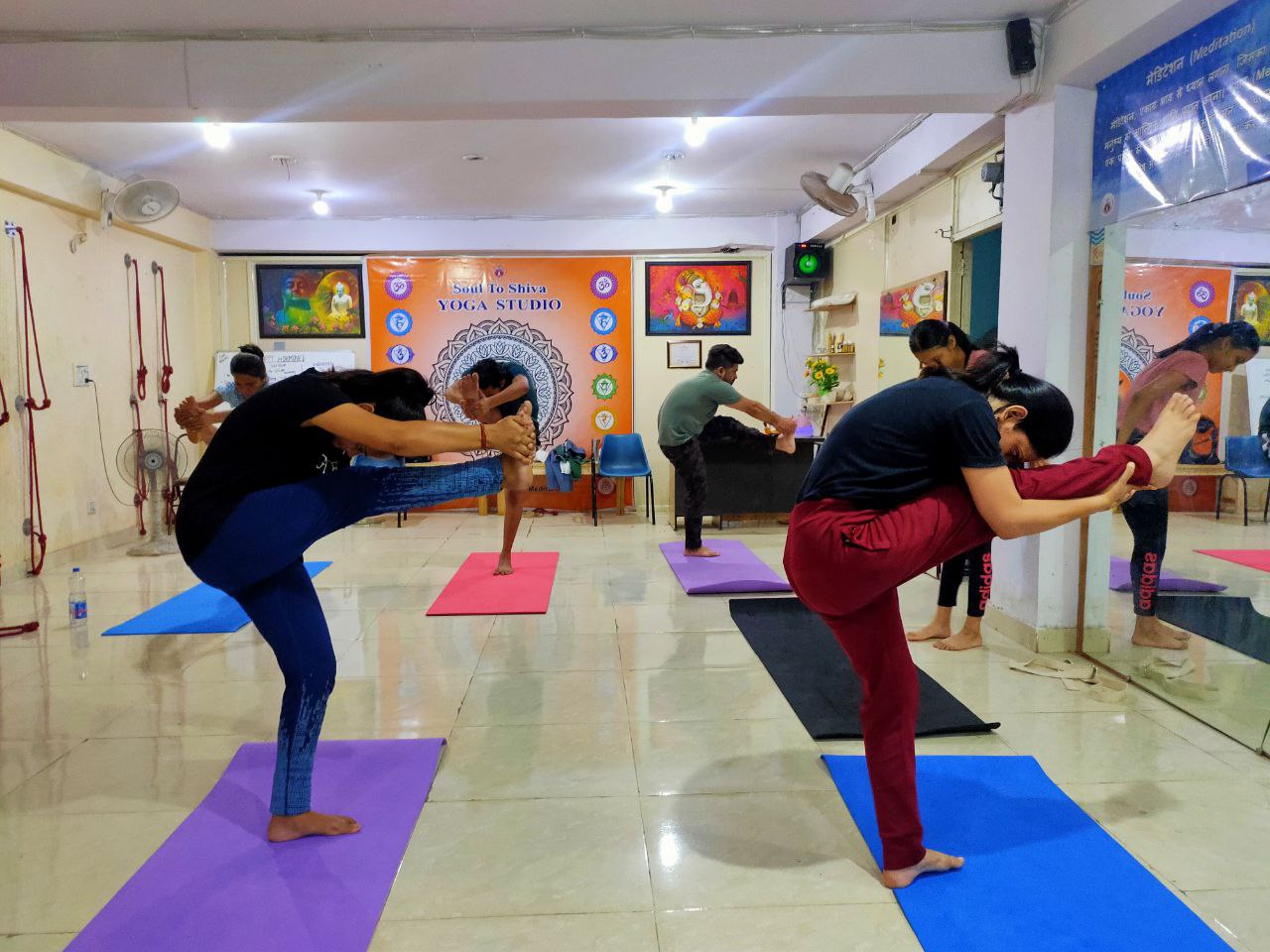LEVEL 3 – Yoga Teacher & Evaluator
Syllabus
- Name of the Certification: Yoga Teacher and Evaluator (YT&E)
- Course level: Level- 3
- Requirement/ Eligibility:
- For open candidates there is no eligibility criteria
- For admission in the course it is suggested/ desired that the candidate should be graduate in any stream from a recognized University or equivalent. However, the Yoga Institutions can define their own eligibility.
- Brief Role Description: Master Trainers in Yoga educational Institutions, Yoga training Courses and training programs. He or she can also act as Evaluator and assessor of Yoga professionals. Can teach in studios, Institutions, colleges/ universities/ Institutions of higher Learning.
- Minimum age: No age limit
- Personal Attributes: The job requires individual to have good communication skills, time management skills and ability to understand the body language of the trainees. The job requires individual to possess key qualities such as self discipline, confidence, maturity, patience, compassion, active listening, time management, empathetic, language proficiency, engaging with students, dedication to teaching, ability to build caring relationships with students, friendliness and approachability, Independent, credible, analytical skills etc.
- Credit points for certificate : 46 credits
- Duration of course: Not less than 800 hours or not less than 15 month as part time or not less than 9 month as full time course.
- Mark Distribution:
Total Marks: 200 (Theory: 80+Practical – 120)

Theory
Unit No.
1.
2.
3.
4.
Unit Name
Foundation of Yoga
Introduction to Yoga Texts
Yoga And Health
Applied Yoga
Total
Marks
20
20
20
20
80
Practical
Unit No.
1.
2.
3.
4.
5.
Practical Work
Demonstration Skills
Teaching Skills
Evaluation Skill
Application of knowledge
Field Experience
Total
Marks
60
20
20
10
10
120
UNIT 1 Foundation of Yoga
- Etymology and Definitions of Yoga (Patanjala Yoga Sutra, Bhagwad Gita, Kathopanishad).
- Brief Introduction to origin, history and development of Yoga (Pre- Vedic period to contemporary times).
- Yoga in Principle Upanishads.
- Yoga tradition in Jainism: Syadvada (theory of seven fold predictions); Concept of Kayotsarga / Preksha meditation).
- Yoga Tradition in Buddhism: concept of Aryasatyas (four noble truths).
- Salient features and branches of Bharatiya Darshana (Astika and Nastika Darshana).
- General introduction to Shad Darshana with special emphasis on Samkhya, Yoga and Vedanta Darshana.
- Brief survey of Yoga in Modern and Contemporary Times (Shri Ramakrishna, Shri Aurobindo, Maharishi Raman, Swami Vivekananda, Swami Dayananda Saraswati, Swami Shivananda, Paramhansa Madhavadas ji, Yogacharya Shri T. Krishnamacharya).
- Guiding principles to be followed by the practioner.
- Brief Introduction to Schools of Yoga; Jnana, Bhakti, Karma, Raja & Hatha.
- Principles and Practices of Jnana Yoga.
- Principles and Practices of Bhakti Yoga.
- Principles and Practices of Karma Yoga.
- Concept and Principles of Sukshma Vyayama, Sthula Vyayama, Surya Namaskars and their significance in Yoga Sadhana.
- Concept and Principles of Shatkarma: Meaning, Types, Principles and their significance in Yoga Sadhana.
- Concept and Principles of Yogasana: Meaning, definition, types and their significance in Yoga Sadhana.
- Concept and Principles of Pranayama: Meaning, definition, types and their significance in Yoga Sadhana.
- Introduction to Bandha & Mudra and their health benefits.
- Introduction to Yogic relaxation techniques with special reference to Yoga Nidra.
- Introduction to Dhyana and its role in health and well being.


UNIT 2 Introduction to Yoga Texts
- Introduction to Prasthanatrayee, Purushartha Chatushtaya and goal of human life.
- Yoga in Kathopanishad, Prashanopanishad, Taittiriyopnishad with special emphasis on Panchakosha Vivek and Ananda Mimamsa.
- Concept of Sthitaprajna (stages and characteristics) in Bhagavad Gita.
- Significance of Bhagavad Gita as a synthesis of Yoga.
- Concept of healthy living in Bhagavad Gita (Ahara, Vihara, Achara, Vichara).
- Introduction and highlights of Yoga Vasishtha, Definitions of Yoga and their relevance in Yoga Vasishtha.
- Study of Patanjal Yoga Sutra including selected sutras from following chapters (I- 1 to 12, II- 1 to 2, 46 to 55, III- 1 to 6).
- Concept of Chitta, Chitta Bhumi, Chitta Vritti, Chitta Vikshepa, Chittaprasadanam, Klesha and Vivek-Khyati and their relationship with wellness.
- Concept of Ishwara and its relevance in Yogasadhana, qualities of Ishwara, Ishwarapranidhana.
- Concept of Kriya Yoga of Patanjali and its importance for healthy living.
- Bahiranga Yoga of Maharisi Patanjali (Yama, Niyama, Asana, Pranayama, Pratyahara).
- Antaranga Yoga of Maharishi Patanjali (Dharana, Dhyana, Samadhi).
- Concept of mental well-being according to Patanjala Yoga.
- Hatha Yoga: Its origin, history and development. Hatha Yoga: its meaning, and definition, aim, objectives and misconception about Hatha Yoga.
- Sadhaka Tattva and Badhaka Tattva principles to be followed by Hatha Yoga practitioner.
- Concept of Matha, Mitahara, Pathya & Apthaya, Types of Aspirants.
- Hatha Yoga practices according to different Hatha Yogic Texts (Hatha Pradipika, Gheranda Samhita and Hatharatnavali).
- Concept of Shwasa-Prashwasa, Vayu, Prana, Upa-Prana, Shat Chakra etc.
- Knowledge of Hatha Yoga practices for wellness (Shatkarma, Asanas, Pranayama, Mudra, Nadaanusandhana).
- Relevance and importance of Hatha Yoga practices in health and well being.
UNIT 3 Yoga And Health
Introduction to Human Body – Anatomy and Physiology
-
- Introduction to Human body.
- Basic structure and functions of Musculoskeletal system, Respiratory system, Cardio vascular system, Nervous system, Digestive system and Endocrine system.
- Homeostasis: its mechanism to maintain internal environment of the body.
- Introduction to sensory organs (Eyes, Nose, Ears, Tounge and Skin).
- Impact of Yogic practices on different systems of the human body: Benefits of Shatkarma, Yogasana, Pranayama and Bandha on Respiratory, Circulatory, Musculoskeletal system.
Introduction to Psychology
-
- Introduction to psychology, concept of human psyche, stages of consciousness, cognitive process: Its meaning and nature.
- Definition and nature of Behavior, kinds of Behavior Motivation.
- Emotions : definition, nature and physiological changes during Emotion.
- Mental Health : Yogic view of Mental Health and Mental Illness.
- Role of Yoga in Mental Health. Importance of psychosocial environment for health and wellness.
Yoga For Health And Wellness.
-
- Yogic concept of health, wellness and illness.
- Importance of psycho-social environment for health and wellness.
- Role of Yoga in various dimensions ( physical, mental,social and spiritual) of health.
- Importance of following Dinacharya and Ritucharya for well being.
- Role of Ahara, Nidra and Brahmacharya in wellness.
Yoga For Disease Prevention And Health Promotion.
-
- Meaning and definition of Health and Disease, Concept of Adhi and Vyadhi, Yoga as a preventive Health care- Heyam dukham anagatam.
- Potential causes of ill –health: Tapatrayas and Kleshas, Mental and Emotional ill Health: Anatrayas.
- Shuddhi Prakriyas in Yoga and their role in preventive and curative Health.
- Knowledge of Trigunas, Pancha-Kosha, Pancha-Prana and Shatkchakra and their role in Health and Disease.
- Yogic concept of Holistic Health and its importance in the management of Diseases.


UNIT 4 Applied Yoga And Education
- Education: Its meaning, definition and goal, role and importance of education in Human Excellence.
- Yoga in Education: Salient features of Yoga Education, Factors of Yoga Education: Teacher, Student and Teaching, Guru- Shishya- Parampara and its importance in Yoga Education.
- Value Education: Its Meaning and Definition, Types of values, value –oriented Education in Personality Development.
- Contribution of Yoga towards Development of Values, Spiritual Growth.
- Salient features of Ideal Yoga Teacher, Role of Yoga Teacher in Value-oriented Education, Role of Yoga in development of healthy society.
Yoga For Personality Develompent
- Personality: Meaning and types of personality.
- Determinants of Personality with reference to psycho-social environment.
- Knowledge of various facets and stages of development of personality.
- Personality Development; Role of spirituality and positive attitude in personality development.
- Role of Yogic practices (Asana, Pranayama, Shatkarma, Bandha, Mudra etc.) in the Personality Development.
Yogic management of stress and its Consequences
- Definition, nature and types of stress.
- Symptoms and consequences of stress on human mind.
- Yogic perspective of stress. Yogic principles for the management of stress and its consequences.
- Concepts and techniques of Stress management in Ashtanga Yoga of Patanjala Yogasutra and Bhagawad Gita.
- Specific practices for stress management: Yogasana, Breath Awareness, Shavasana, Yoganidra, Pranayama and Meditation.
Yoga for prevention and management of Life Style Disorders
- Concept of Yogic life style and its relevance.
- General knowledge about life style related disorders : Acidity , Constipation , Irritable bowel syndrome(IBS), Bronchial Asthma , Sinusitis, Hypertension, Neck pain, Low Backache, Osteo-arthritis etc.
- Role of Yoga in prevention and management of common disorder: Acidity, Constipation, Irritable bowel syndrome (IBS), Bronchial Asthma , Sinusitis, Hypertension, Neck pain, Low Backache, Osteo-arthritis.
- Role of Yoga in prevention and management of non-communicable disorders.
- Yoga as an integral medication.


Book for reference for Theory
1. Goyandka, Harikrishandass : Yoga Darshan Geeta Press, Gorakhpur (Samvat 2061).
2. Karel Werner : Yoga and Indian Philosophy Motilal Banarasidas, 1975
3. Swami Vivekananda : Jnana Yoga, Bhakti Yoga, Karma Yoga, Raja Yoga (4separate books) Advaita Ashrama, Kolkata, 2011 & 2012
4. Basavaraddi I. V. and Pathak, S. P. : Hathayoga ke Aadhar avam Prayoga (Sanskrit-Hindi), MDNIY, New Delhi, 2007
5. Sahay G. S. : Hathayogapradipika MDNIY, New Delhi, 2013
6. Gita press Gorakhpur : Shreemad Bhagvadgita Gita press Gorakhpur, Samvat 2073
7. Quality Council of India (QCI) : Yoga professionals Official Guidebook for Level 2 Excel Books, New Delhi 2016
8. Kalidas Joshi and Ganesh Shankar : Yoga ke Sidhant Evam Abhyas,
Madhya Pradesh Hindigrantha Akadami, Bhopal, 1995
9. Brahmachari Swami Dhirendra : Yogic Suksma Vyayama, Dhirendra Yoga Publications, New Delhi, 1986
10. Digambarji Swami and Gharote M.L. : Gheranda Samhita, Kaivalyadhama S.M.Y.M. Samiti, Lonavala 1997
11. Sahay G. S. : Hathayogapradipika MDNIY, New Delhi, 2013
12. Kalayan : Upanishads (23rd year Special) Geeta Press, Gorakhpur
13. Gore M. M. : Anatomy and Physiology of Yogic Practices, Kanchana Prakashana, Lonavala, 2004
14. The Sadhaks : Yoga Therapy, The Yoga Institute, Santacruz, 2002
15. Swami Karmananda : Management of Common Diseases, Bihar Yoga Publication Trust, 2006, Munger
16. Bhogal, R. S. : Yoga and Modern Psychology Kaivalyadhama , Lonavala
17. Dr. M.L. Gharote : Applied Yoga, ACE Enterprises, Madhu Rajnagar, Pune Road, Pune, 2010
18. Prof. Ram Harsh Singh : Yoga and Yogic Therapy Chaukhambha Subharati Publishers, Varanasi, 2011
19. MDNIY : Yoga Module for Wellness Series (1 to 10) MDNIY, New Delhi 2011
20. Basavaraddi, I.V. : How to manage Stress through Yoga MDNIY, New Delhi
21. Robin, M., Nagendra, HR & Ford-Kohne, N : Yoga for Common Ailments Simon & Schuster, UK, 1990
22. Basavaraddi, I. V. & others : Yoga Teachers Manual for School Teachers,
MDNIY, New Delhi, 2010
23. Jayadeva, Yogendra : Cyclopedia Vol I, II, III & IV
